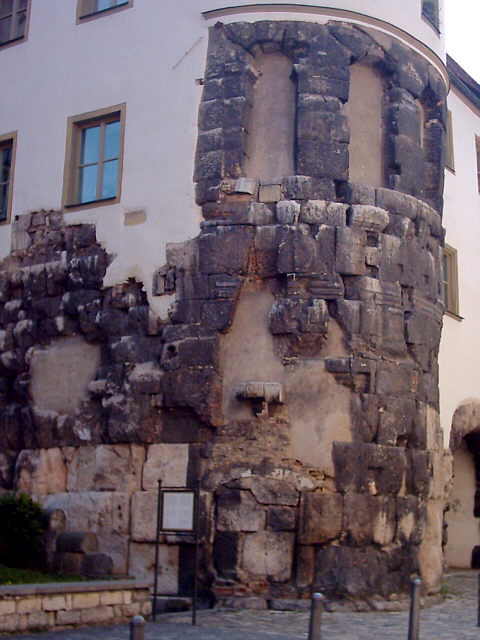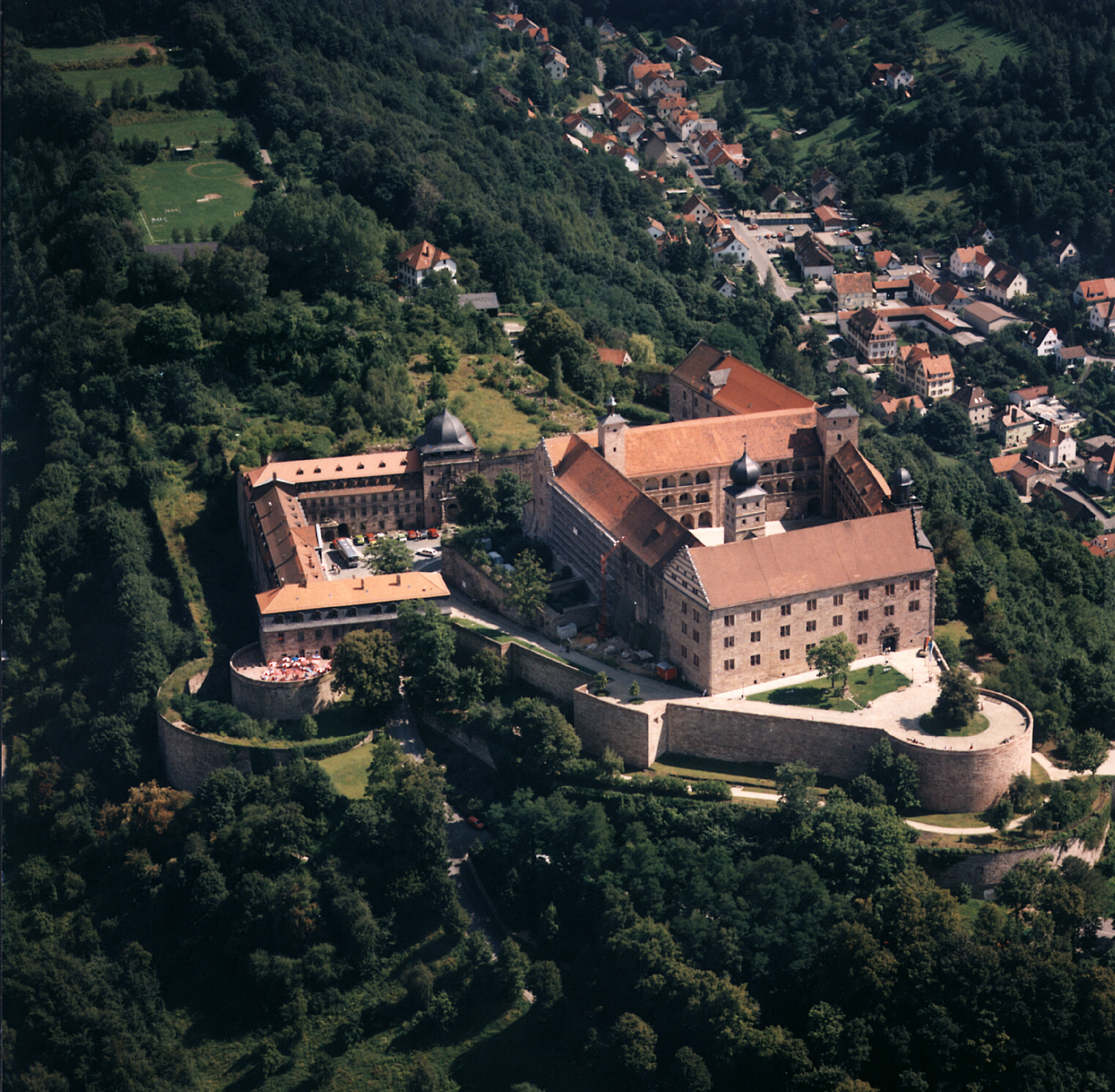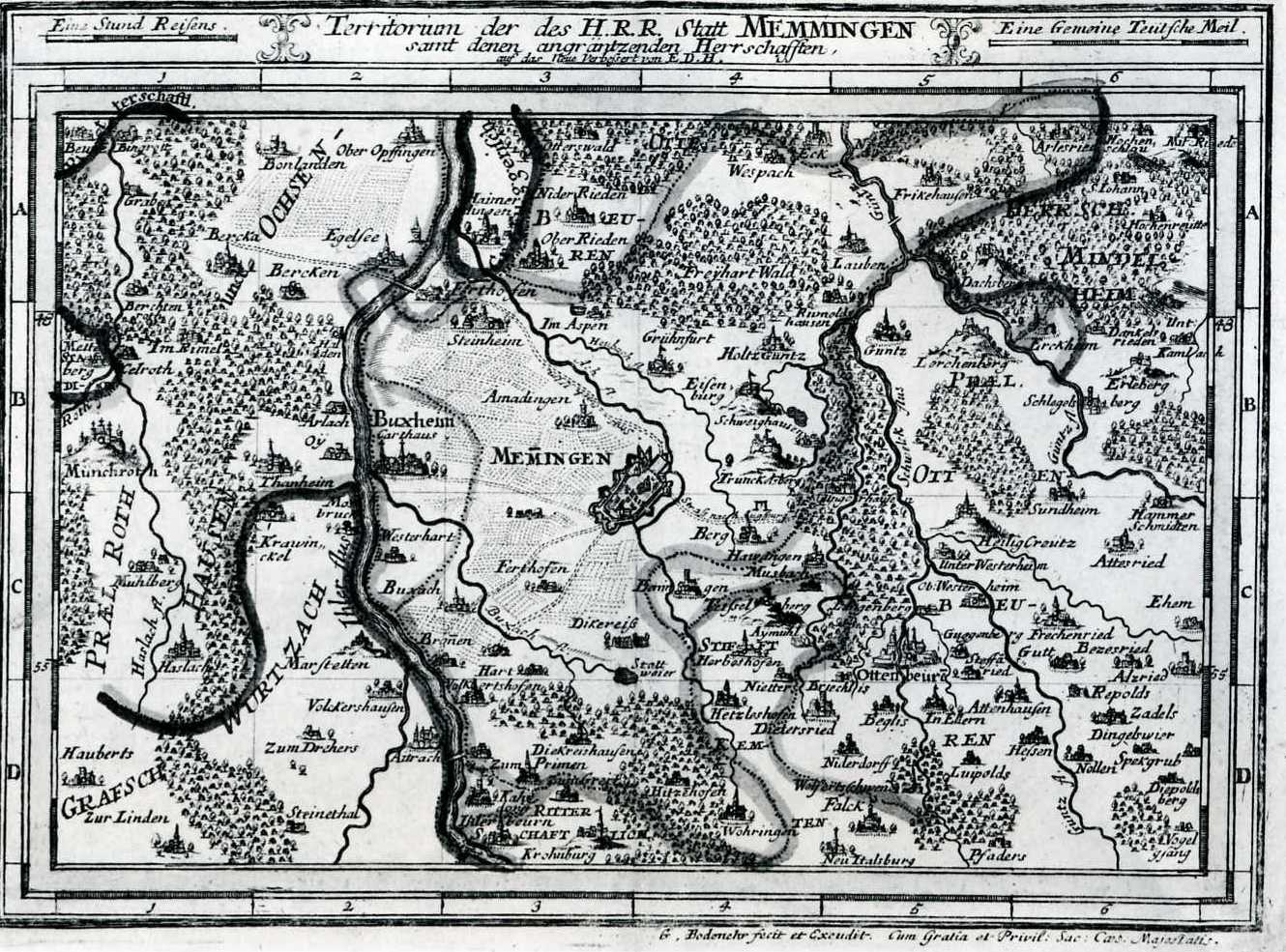|
Haus Der Bayerischen Geschichte
The Haus der Bayerischen Geschichte (House of History of Bavaria, Bavarian History) or HdBG was established in 1983 as an authority of the Free State of Bavaria, Germany and, since 1993, has had its permanent headquarters at Augsburg. On 6 October 1998 it was incorporated into the Bavarian State Ministry for Science, Research and Art (''Bayerisches Staatsministerium für Wissenschaft, Forschung und Kunst''). The German historian Claus Grimm was director from 1983 until 2007. Sources * Ulla-Britta Vollhardt: ''Geschichtspolitik in Bayern. Das Haus der Bayerischen Geschichte: Idee – Debatte – Institutionalisierung''. Utz, München 2003, . External links Official website of the Haus der Bayerischen GeschichtePhoto archive of the Haus der Bayerischen GeschichteBavarias towns and villages. History - Coats of arms - Links.Castles in Bavaria. History - Architecture - Photographs - PlansAbbeys in Bavaria. History - Photographs - Writing History of Bavaria Historiography of ... [...More Info...] [...Related Items...] OR: [Wikipedia] [Google] [Baidu] |
History Of Bavaria
The history of Bavaria stretches from its earliest Human settlement, settlement and its formation as a stem duchy in the 6th century through its inclusion in the Holy Roman Empire to its status as an independent kingdom and finally as a large ''States of Germany, Bundesland'' (state) of the Federal Republic of Germany. Originally settled by Celts, Celtic peoples such as the Boii, by the 1st century BC it was eventually conquered and incorporated into the Roman Empire as the Roman province, provinces of Raetia and Noricum. Early settlements and Roman Raetia There have been numerous palaeolithic discoveries in Bavaria. The earliest inhabitants known from surviving written sources were the Celts, participating in the widespread La Tène culture. The Roman Empire under Augustus made the Danube, which runs through Bavaria, its northern boundary. What is now southern Bavaria was in the northern half of the Roman province of Raetia, which was the land of the Vindelici. The main Roman c ... [...More Info...] [...Related Items...] OR: [Wikipedia] [Google] [Baidu] |
Traunstein
Traunstein (; ) is a Town#Germany, town in the south-eastern part of Bavaria, Germany, and is the administrative center of a much larger Traunstein (district), district of the same name. The town serves as a local government, retail, health services, transport and educational center for the wider district. The historic market square, Bavarian hospitality, Hofbräuhaus Traunstein, local breweries, outdoor sports facilities, Easter Monday horse parade, and connections with Benedict XVI, Pope Emeritus Benedict XVI, contribute to the town's profile as a tourist destination. Geography The town is situated at the heart of a region called Chiemgau, approximately 11 km east of the Chiemsee between Munich and Salzburg, 15 km north of the Alps, and 30 km west of Salzburg. History Early history Although as early as 790 the church records list possessions "ad Trun" and some medieval defence constructions are known to have existed in the surroundings since the 10th century ... [...More Info...] [...Related Items...] OR: [Wikipedia] [Google] [Baidu] |
Aschaffenburg
Aschaffenburg (; Hessian: ''Aschebersch'', ) is a town in northwest Bavaria, Germany. The town of Aschaffenburg, despite being its administrative seat, is not part of the district of Aschaffenburg. Aschaffenburg belonged to the Archbishopric of Mainz for more than 800 years. The town is located at the westernmost border of Lower Franconia and separated from the central and eastern part of the '' Regierungsbezirk'' (administrative region) by the Spessart hills, whereas it opens towards the Rhine-Main plain in the west and the north-west. Therefore, the inhabitants speak neither Bavarian nor East Franconian but rather a local version of Rhine Franconian. Geography Location The town is located on both sides of the Main in north-west Bavaria, bordering to Hesse. On a federal scale it is part of central Germany, just southeast of Frankfurt am Main. In the western part of the municipality, the smaller Aschaff flows into the Main. The region is also known as ''Bayerische ... [...More Info...] [...Related Items...] OR: [Wikipedia] [Google] [Baidu] |
Matthias Grünewald
Matthias Grünewald ( – 31 August 1528; also known as Mathis Gothart Nithart) was a German Renaissance painter of religious works who ignored Renaissance classicism to continue the style of late medieval Central European art into the 16th century. Only ten paintings—including several polyptychs—and thirty-five drawings survive, all religious, although many others were lost at sea on their way to Sweden as war booty. He was obscure until the late nineteenth century, when many of his paintings were attributed to Albrecht Dürer, who is now seen as his stylistic antithesis. His largest and most famous work is the '' Isenheim Altarpiece'' created ''c.'' 1512 to 1516. Life He was recognised in his own lifetime, as shown by his commissions, yet the details of his life are unusually unclear for a painter of his significance at this date. The first source to sketch his biography comes from the German art historian Joachim von Sandrart, who describes him around 1505 working on ... [...More Info...] [...Related Items...] OR: [Wikipedia] [Google] [Baidu] |
Bamberg
Bamberg (, , ; East Franconian German, East Franconian: ''Bambärch'') is a town in Upper Franconia district in Bavaria, Germany, on the river Regnitz close to its confluence with the river Main (river), Main. Bamberg had 79,000 inhabitants in 2022. The town dates back to the 9th century, when its name was derived from the nearby ' castle. Cited as one of Germany's most beautiful towns, with medieval streets and buildings, the old town of Bamberg with around 2,400 Timber framing, timber houses has been a UNESCO World Heritage Site since 1993. From the 10th century onwards, Bamberg became a key link with the West Slavs, Western Slavic peoples, notably those of Poland and Pomerania. It experienced a period of great prosperity from the 12th century onwards, during which time it was briefly the centre of the Holy Roman Empire. Holy Roman Emperor, Emperor Henry II, Holy Roman Emperor, Henry II was buried in the old town, alongside his wife Cunigunde of Luxemburg, Kunigunde. The town' ... [...More Info...] [...Related Items...] OR: [Wikipedia] [Google] [Baidu] |
Heinrich II
Henry II may refer to: Kings * Saint Henry II, Holy Roman Emperor (972–1024), crowned King of Germany in 1002, of Italy in 1004 and Emperor in 1014 *Henry II of England (1133–89), reigned from 1154 *Henry II of Jerusalem and Cyprus (1271–1324), reigned from 1285; king of Jerusalem in name only from 1291 *Henry II of Castile (1334–79), reigned 1366–67 and from 1369 *Henry VI of England (1421–71), reigned 1422–1461 and from 1470 as a King of England, and reigned from 1422 to 1453 as Henry II, king of France *Henry II of Navarre (1503–55), reigned from 1518 *Henry II of France (1519–59), reigned from 1547 * Henry II of Sicily (also known as Henry II, Duke of Swabia and Henry (VII) of Germany), king of Germany (''Rex romanorum'') and of Sicily (1211–42) Others *Henry II, Duke of Bavaria (951–995) * Henry II, Count of Louvain (d. 1071) * Henry II, Duke of Carinthia (1090–1122) *Henry II, Margrave of Meissen (1103–1123) *Henry II, Duke of Saxony, better kno ... [...More Info...] [...Related Items...] OR: [Wikipedia] [Google] [Baidu] |
Passau
Passau (; ) is a city in Lower Bavaria, Germany. It is also known as the ("City of Three Rivers"), as the river Danube is joined by the Inn (river), Inn from the south and the Ilz from the north. Passau's population is about 50,000, of whom about 12,000 are students at the University of Passau, renowned in Germany for its institutes of economics, law, theology, computer science and cultural studies. History In the 2nd century BC, many of the Boii tribe were pushed north across the Alps out of northern Italy by the Romans. They established a new capital called Boiodurum by the Romans (from Gaulish ), now within the Innstadt district of Passau. Passau was an ancient Rome, ancient Roman colony called Batavis, Latin for "for the ''Batavi''". The Batavi (Germanic tribe), Batavi were an ancient Germanic tribe from area of the Rhine delta who frequently served in the Roman army as auxiliary troops. ''Batavis'' (Passau-Altstadt) was a Roman castrum in the province of Raetia, while a ... [...More Info...] [...Related Items...] OR: [Wikipedia] [Google] [Baidu] |
Regensburg
Regensburg (historically known in English as Ratisbon) is a city in eastern Bavaria, at the confluence of the rivers Danube, Naab and Regen (river), Regen, Danube's northernmost point. It is the capital of the Upper Palatinate subregion of the state. With more than 150,000 inhabitants, Regensburg is the List of cities in Bavaria by population, fourth-largest city in the State of Bavaria after Munich, Nuremberg and Augsburg and the eighth-largest of all List of cities and towns on the river Danube, cities on the river Danube. From its foundation as an imperial Roman river fort, the city has been the political, economic and cultural centre of the surrounding region. Later, under the rule of the Holy Roman Empire, it housed the Perpetual Diet of Regensburg. The medieval centre of the city was made a UNESCO World Heritage Site in 2006 because of its well-preserved architecture, being the biggest medieval city site north of the Alps, and the city's historical importance for assembli ... [...More Info...] [...Related Items...] OR: [Wikipedia] [Google] [Baidu] |
Kulmbach
Kulmbach () is the capital of the district of Kulmbach in Bavaria in Germany. The town, once a stronghold of the Principality of Bayreuth, is renowned for its University of Life Sciences, a branch of the University of Bayreuth, the massive Plassenburg Castle, which houses the largest tin soldier museum in the world, for its brewery, its vivid food industry, which hosts some of the world's biggest food businesses, and for its sausages, or '' Bratwürste''. Geography Location Kulmbach is located in the middle of the Bavarian province of Upper Franconia, about northwest of the city of Bayreuth. To the south of Kulmbach, the River Main begins at the confluence of its headstreams, the White Main and Red Main. Town districts Kulmbach is divided into the following districts (with population in brackets): History From about 900 AD there was a small settlement in what is now the district of Spiegel, which consisted of a forest lodge and a fortified tenant farm (''Fronhof'') to ... [...More Info...] [...Related Items...] OR: [Wikipedia] [Google] [Baidu] |
Berlin
Berlin ( ; ) is the Capital of Germany, capital and largest city of Germany, by both area and List of cities in Germany by population, population. With 3.7 million inhabitants, it has the List of cities in the European Union by population within city limits, highest population within its city limits of any city in the European Union. The city is also one of the states of Germany, being the List of German states by area, third smallest state in the country by area. Berlin is surrounded by the state of Brandenburg, and Brandenburg's capital Potsdam is nearby. The urban area of Berlin has a population of over 4.6 million and is therefore the most populous urban area in Germany. The Berlin/Brandenburg Metropolitan Region, Berlin-Brandenburg capital region has around 6.2 million inhabitants and is Germany's second-largest metropolitan region after the Rhine-Ruhr region, as well as the List of EU metropolitan areas by GDP, fifth-biggest metropolitan region by GDP in the European Union. ... [...More Info...] [...Related Items...] OR: [Wikipedia] [Google] [Baidu] |
Ingolstadt
Ingolstadt (; Austro-Bavarian language, Austro-Bavarian: ) is an Independent city#Germany, independent city on the Danube, in Upper Bavaria, with 142,308 inhabitants (as of 31 December 2023). Around half a million people live in the metropolitan area. Ingolstadt is the second largest city in Upper Bavaria after Munich and the List of cities in Bavaria by population, fifth largest city in Bavaria after Munich, Nuremberg, Augsburg and Regensburg. The city passed the mark of 100,000 inhabitants in 1989 and has since been one of the major cities in Germany. After Regensburg, Ingolstadt is the second largest German List of cities and towns on the river Danube, city on the Danube. The city was first mentioned in 806. In the late Middle Ages, the city was one of the capitals of the Bavarian duchies alongside Munich, Landshut and Straubing, which is reflected in the architecture. On 13 March 1472 Ingolstadt became the seat of the first University of Ingolstadt, university in Bavaria, whic ... [...More Info...] [...Related Items...] OR: [Wikipedia] [Google] [Baidu] |
Memmingen
Memmingen (; Swabian German, Swabian: ''Memmenge'') is a town in Swabia (Bavaria), Swabia, Bavaria, Germany. It is the economic, educational and administrative centre of the Danube-Iller region. To the west the town is flanked by the Iller, the river that marks the Baden-Württemberg border. To the north, east and south the town is surrounded by the district of Unterallgäu (Lower Allgäu). With about 42,000 inhabitants, Memmingen is the 5th biggest town in the administrative region of Swabia. The origins of the town go back to the Roman Empire. The old town, with its many courtyards, castles and patricians' houses, palaces and fortifications is one of the best preserved in southern Germany. With good transport links by road, rail and air, it is the transport hub for Swabia, Upper Swabia and Swabia, Central Swabia, and the Allgäu. Due to its proximity to the Allgäu region, Memmingen is often called the Gateway to the Allgäu (''Tor zum Allgäu''). The town motto is ''Memminge ... [...More Info...] [...Related Items...] OR: [Wikipedia] [Google] [Baidu] |







